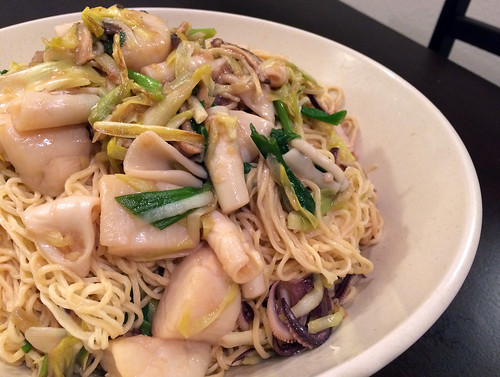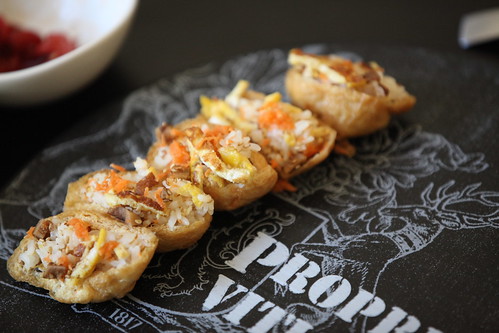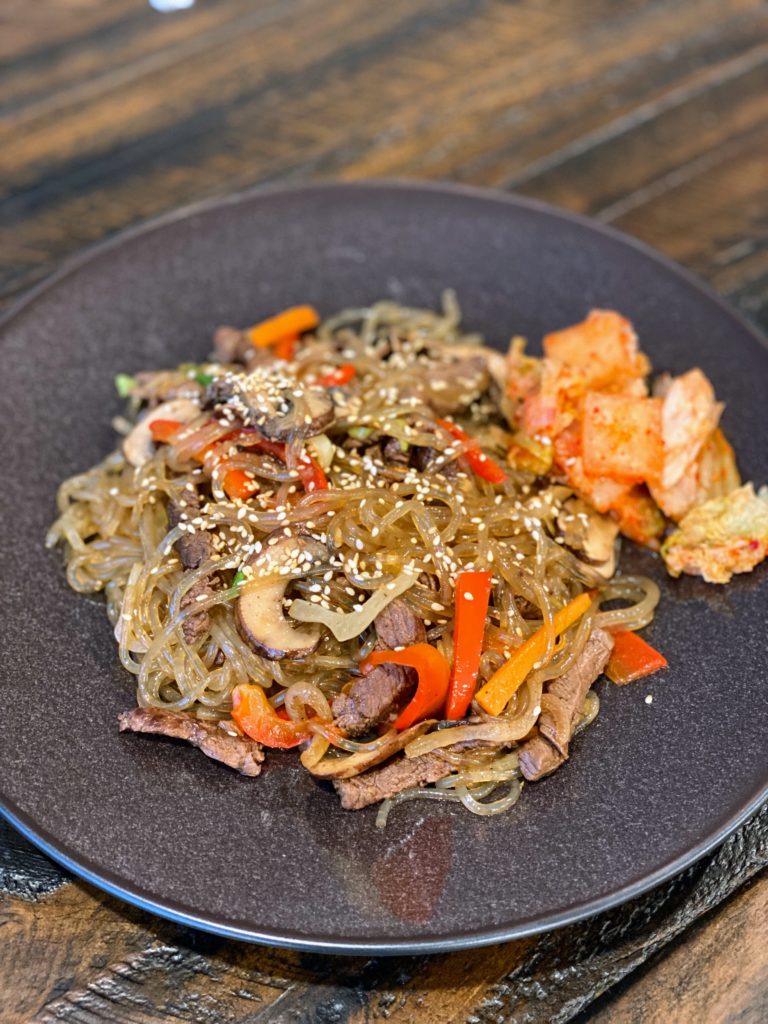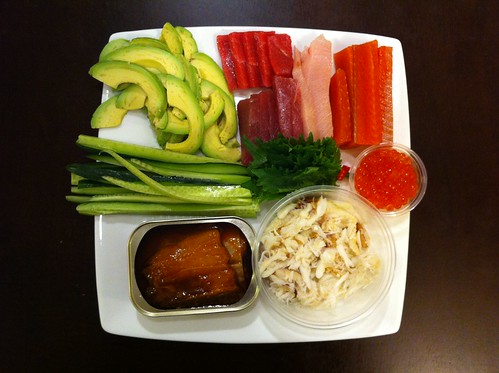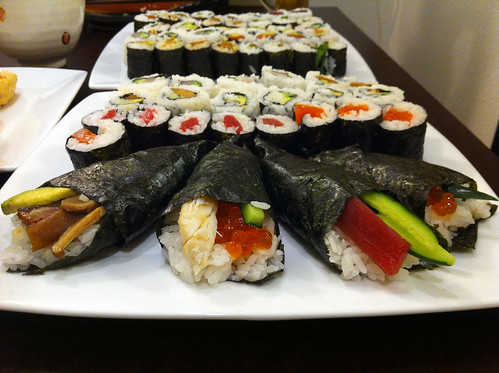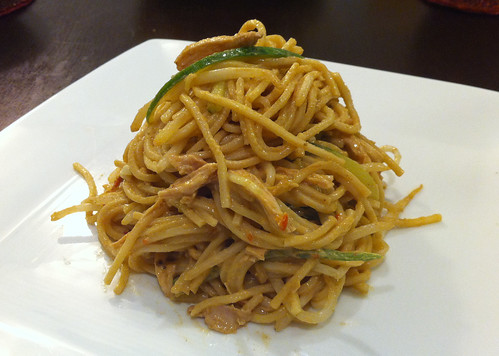I work near San Francisco’s Chinatown and every day is an uphill (literally and figuratively) battle to resist the delicious noodle dishes beckoning at every corner. My favorite are the bustling Hong Kong-style shops that line Chinatown’s alleyways, serving chewy egg noodles tossed with fresh vegetables and seafood.
This dish is an homage to those restaurants that I adore so much. It’s worth it to seek out garlic chives as they impart a uniquely herbaceous flavor, although a combination of regular chives and minced garlic can be substituted. I use scallops and squid here, but any shellfish will work just fine.
Ingredients:
1 pound fresh thin Chinese egg noodles
3 teaspoons sesame oil
6 squid (about 4 ounces), cleaned
3/4 pound sea scallops, halved
1 tablespoon cornstarch
1/2 teaspoon salt
2/3 cup chicken broth
1 tablespoon soy sauce
1 tablespoon oyster-flavored sauce
4 dried shiitake mushrooms
1 tablespoon vegetable oil
1 tablespoon minced ginger
1/2 pound yellow garlic chives, cut into 2-inch lengths
4 green onions, cut into 2-inch lengths
1. Bring a large pot of water to a boil. Add noodles and cook according to package directions. Drain, rinse with cold water, and drain again. Add 2 teaspoons sesame oil and toss to coat.
2. Cut off squid tentacles. Cut squid bodies in half lengthwise with a knife and score the inside diagonally in a cross-hatch pattern. Combine squid tentacles and bodies, scallops, cornstarch, and salt in a bowl. Stir to coat; let stand for 10 minutes. Combine chicken broth, soy sauce, oyster-flavored sauce, and remaining teaspoon sesame oil in another bowl to form sauce.
3. Soak dried mushrooms in warm water to cover until softened, about 20 minutes; drain. Discard stems and thinly slice caps.
4 Place a wok over medium-high heat until hot. Add vegetable oil, swirling to coat sides. Add mushrooms, ginger, garlic chives, and green onions; stir-fry for 3 minutes. Add scallops and squid; stir-fry for 3 minutes. Add sauce, stirring, until it boils and thickens. Toss in noodles, mix well, remove from heat, and serve.

